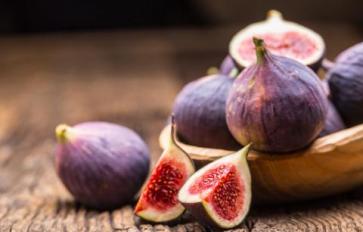Wild Chives
Out of all the spring plants you should forage for, wild chives are usually the first to start popping up. Once you train your eye to see them, you'll realize they're all over the place – in fields, in yards, even by roadsides. This hardy little plant is well worth knowing, especially since you can eat it!
How to Identify Wild Chives
Wild chives are pretty easy to identify if you've ever seen a domestic chive. Essentially, they look like a clump of grass as they grow, but their leaf blades are not flat like grass. Instead, they're rather cylindrical and hollow on the inside. The quickest way to know if it's wild chives is to pick off a piece of leaf and smell it—if it has an oniony scent, then it's definitely wild chives. Wild chives can also grow between 10 to 20 inches in height and develop little lilac flowers at the top of the leaf when fully grown. You don't have to wait for the flowers to bloom or even appear before harvesting wild chives, but the flowers are edible as well. Wild chives are typically found growing in USDA zones 4-8 among grasses and natural areas.
How to Use Wild Chives
Chives make excellent seasoning on their own or sautéed as a vegetable. You can add them to soups and stews for a delicious delicate onion flavor, or even pickle them if you're feeling creative. Since the entire plant can be eaten, it's really up to you on how you want to use it. The lilac flowers are edible and make pretty garnish on top of soups and salads. Before you eat wild chives, make sure to wash them off really good, letting them soak in water for 10 minutes to get all the dirt off. For health reasons, do not harvest chives too close to the road, seeing as they can absorb toxins from cars. The best places to harvest them are in your own backyard or if you see them growing wild in big fields. Chives tend to like grassy areas. Grab a basket and dig them up or simply pull them out with your hands.
Violets
Violets are absolutely beautiful little spring flowers. They're usually the first flowers that add a bit of color to the landscape come springtime. They can be used in so many ways, you may be surprised at how versatile a little flower can be.
How to Identify Violets
These beauties can be found in purple, white, yellow, and blue. (The most common colors are purple and blue though.) The flower has an inner white area and is somewhat hairy. Each flower slightly droops and appears on its own leafless stalk. The flowers are formed from five petals: Four are upswept (fan-shaped) petals with two per side, and there is one broad, lobed lower petal pointing downward on it. Violet leaves are somewhat an oblong heart or kidney shape: They are toothed but do not have any hairs and can grow between 13 mm and 50 mm in width. They tend to grow (and thrive) in medium, well-drained soils, although they adore moisture-retentive, rich soils. They prefer partial shade but can also survive in full sun. You can find them on lawns and near lakes and streams.
How to Use Violets
One of the most popular things to do with violets is to candy them—they make lovely edible décor for cookies and cakes. You can also add them to salads, or use them in a vibrantly colored cocktail for spring parties. You can also infuse them into your tea, jelly, honey, or butter. It's all about getting creative! You can even use violets for medicine: Tincture the flowers and use it to help reduce swelling of glands. Or, make a cough syrup from violet leaves and honey to soothe dry coughs. If you're feeling stressed, making a tea from the petals can also help relax and calm you after a stressful day. Violets are also great for beauty: You can make a lotion out of the flowers or add them to a homemade facial cleanser. The choice is totally yours. Whoever said bigger is better didn't know about these little flowers!
Clover Flowers
You've probably seen clover flowers before: Come spring, they start to pop up, but they're most prolific by the end of spring. These little flowers are far from just weeds: They're edible and can definitely add a unique twist to your afternoon tea or typical lunch.
How to Identify Clover Flowers
Clover flowers tend to come in two different colors: red and white. They are both easy to identify once you know what to look for. Clovers have a very distinct round flower head made up of numerous tubular-shaped flowers. Each flower head is about 2 to 3 centimeters across and consists of numerous tiny flowers, spread out in different directions. The blooming period usually starts in late spring and can continue into late October, depending on the weather. The leaves are also distinct: They're oval or ovate shaped and tend to be broader in the middle. Toward the center of the upper surface of each leaf there's usually a chevron that is white or pale green.
How to Use Clover Flowers
These flowers are edible and make a great tea. There is some debate about which is better—white clover or red clover in terms of taste—but you can eat both. Make sure to pick fresh flowers that don't have wilted brown petals. The petals alone are sweetest, but you can eat the entire flower head. However, it is noted you should consume only fresh or dried flowers (never fermented) for safety reasons. Also, clovers grown in warmer tropical regions contain small amounts of cyanide, so these should be avoided. Some people are allergic to clover, so start with small quantities if you're unsure. You can also toss the leaves into a salad or make tea out of them, though the flowers are normally preferred.
For more tips on foraging, check out these 3 plants you should know how to forage for and identify. Also, here are 5 forgeable plants you should know about come summer. Foraging is a great skill to learn—it can really make a difference in your health and improve your relationship with food greatly. You can even forage for your own spring bouquet instead of buying one, especially since most wildflowers have medicinal benefits other than just being beautiful.








